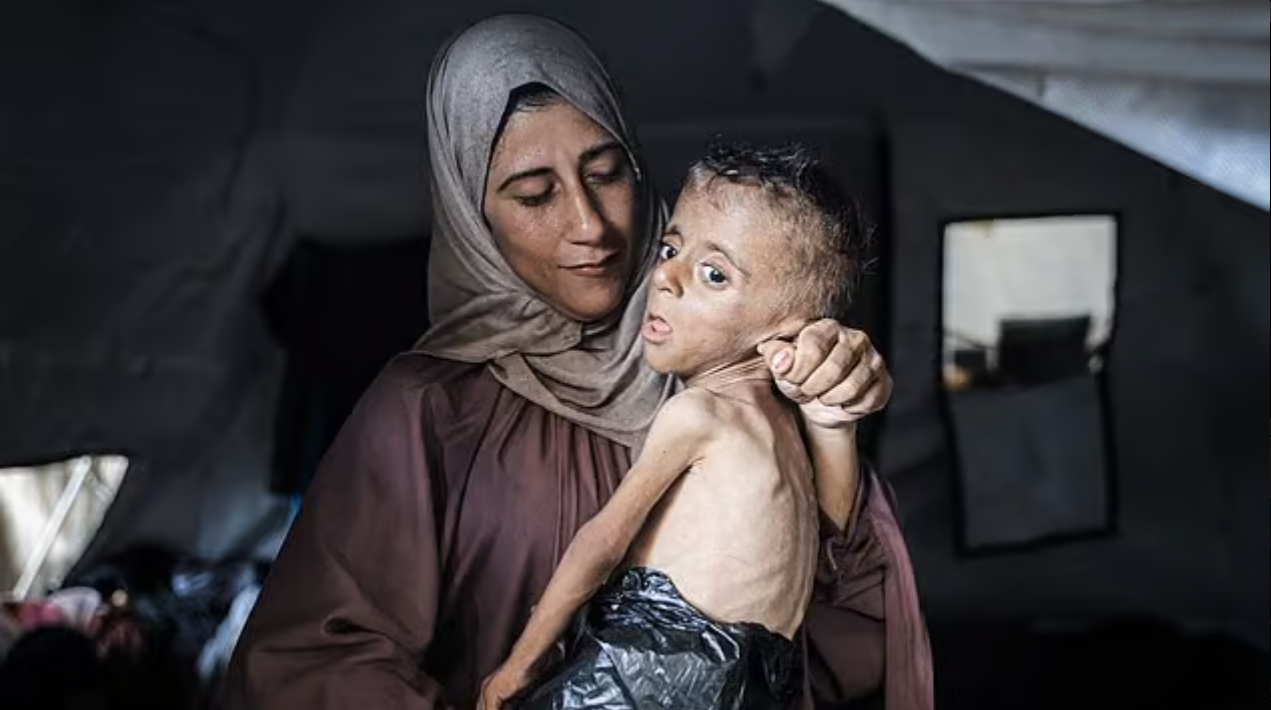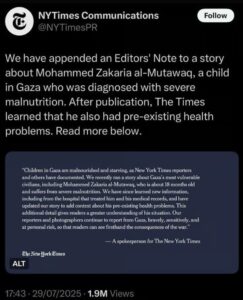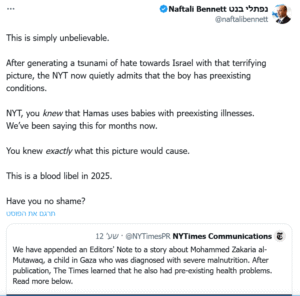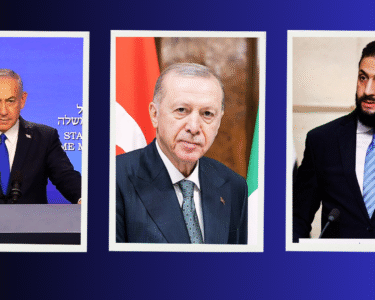The New York Times has issued a quiet but significant correction to a widely circulated article about the humanitarian situation in the Gaza Strip, following revelations that a photograph of a malnourished toddler — used globally as a symbol of alleged famine — was in fact misleading. The child in question, one-and-a-half-year-old Muhammad al-Maatouq, suffers from multiple rare genetic disorders unrelated to food shortages, according to medical documentation verified by independent sources. The correction comes after a detailed investigation by journalist David Collier, which dismantled key claims that had been amplified across major international media platforms.
The photograph, captured by Gazan photojournalist Ahmed al-Areini, shows Muhammad being held in his mother’s arms, wearing what appears to be a makeshift diaper fashioned from a black garbage bag. Published widely by outlets including CNN, Sky News, BBC, The Guardian, Daily Mail, and The Times, the image was quickly seized upon as emblematic of a worsening humanitarian disaster in Gaza. Even traditionally pro-Israel media such as the UK’s Daily Express ran the story prominently, relying on al-Areini’s claim that Muhammad’s weight had plummeted from 9 kilograms to just 6 — nearly half the average for a child his age.
Al-Areini further stated that the toddler was deprived of breast milk, formula, and vitamins due to a lack of humanitarian aid. These claims ignited global outrage and were interpreted by many as damning evidence of Israeli culpability in alleged starvation conditions within Gaza.
However, journalist David Collier’s investigation revealed a radically different narrative. Drawing on a medical report from the Basma Association for Aid in Gaza, signed by local physician Dr. Said Muhammad al-Nassan, Collier found that Muhammad had been born in December 2023 — two months after the outbreak of war — with serious congenital conditions, including cerebral palsy and chronic hypoxia. The report confirmed that the child had been dependent on special nutritional supplements since birth, and that his stunted growth and physical deterioration stem from his lifelong neurological and muscular complications, not from a lack of food or international aid.
In response to the findings, The New York Times quietly amended its original article and added a small “editor’s note” at the bottom, stating: “This article has been updated and includes information about Muhammad al-Maatouq, a child in Gaza suffering from severe malnutrition. After the article’s publication, The Times learned from his doctor that Muhammad also had previous health problems”. The publication maintained that worsening conditions in Gaza contributed to the child’s decline, but offered no substantive retraction of the initial implications.
Significantly, the correction was not published on the newspaper’s main social media channels — which reach tens of millions — but instead appeared only on its public relations account on X (formerly Twitter), a relatively obscure venue with limited public visibility. Israeli officials accused The Times of burying the clarification and continuing to allow distorted narratives to circulate.
The Israeli Consulate in New York confirmed that the correction followed a formal diplomatic appeal. Consul General Ofir Akunis issued a scathing statement, condemning what he described as the international media’s repeated failures to verify information before publication. “Time and again, the global press falls for Hamas’s abhorrent lies and propaganda”, Akunis declared.
Former Israeli Prime Minister Naftali Bennett was even more direct, accusing The New York Times of complicity in the dissemination of false information. “This is simply incomprehensible,” he wrote in a social media post. “After creating a tsunami of hatred toward Israel through that horrifying image, The New York Times now quietly admits that the child suffered from underlying diseases”. Bennett labeled the episode “a blood libel in 2025”, a reference to historically false and inflammatory accusations that have targeted Jews for centuries.
Collier’s investigation uncovered further inconsistencies in the original story. Notably, the journalist observed that al-Areini’s photographs excluded Muhammad’s older brother, three-year-old Jude, who appeared to be in good health in other frames. He also noted that Muhammad’s mother, Huda, did not show visible signs of extreme hunger or distress — a key omission given the photograph’s intended symbolism.
The BBC, which ran a 64-second video interview with Huda, was also criticized for excluding any mention of Muhammad’s medical conditions. According to Collier, “even in the video the mother hints at this, referring to a prolonged struggle that included physiotherapy treatments that helped the child stand on his feet.” He further pointed to the toddler’s spinal curvature, evident in the images, as a telltale indicator of cerebral palsy — a detail ignored by both the BBC narrator and The New York Times.
While the amended NYT article acknowledged diagnoses of “severe malnutrition” from local clinics including Al-Rantisi Children’s Hospital, it downplayed the significance of Muhammad’s congenital illnesses. A quote from the mother, who reportedly told clinic staff that she was instructed to “treat him with food and water”, was presented without broader medical context.
The case has reignited debate over the role and responsibility of international media outlets in conflict zones, particularly in contexts as politically charged as Gaza. It underscores the danger of relying on imagery — however emotionally powerful — without rigorous fact-checking or clinical corroboration. In wars where propaganda is a central tool of influence, the potential for media missteps carries enormous implications for public perception, diplomacy, and policy.
This is not the first time that images or accounts from the Gaza Strip have come under scrutiny for factual distortions or selective framing. For Israeli officials, it is yet another example of the international media’s vulnerability to manipulation by Hamas-affiliated sources. “Israel will continue to fight for truth and facts”, Consul General Akunis affirmed, “and to shatter Hamas propaganda in every possible way”.
The incident leaves lingering questions about editorial standards, accountability, and the sheer difficulty of navigating the truth in the fog of modern war. While the correction by The New York Times may satisfy a procedural obligation to update the record, critics argue that the damage has already been done — the image of a dying child, stripped of its context, remains etched in the global consciousness. And in a media environment dominated by viral visuals and headlines, retractions often arrive too late to undo the impact of the original message.
Photo: Ahmed al-Areini







